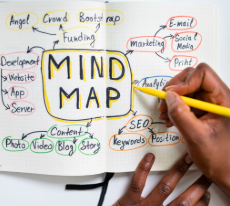Concept mapping is a powerful way to visually organize ideas and see how they connect. Whether you’re a high school student or working through college courses, building the right study habits can make concept mapping a highly effective learning tool. Here’s how to develop study habits that support clear and creative concept maps.
1. Start With Active Reading
Before you create a concept map, it’s important to fully understand your reading material. Use active reading techniques such as highlighting key terms, asking questions, and summarizing each section in your own words. These habits help identify the main concepts and supporting details you’ll need for your map.
2. Use a Dedicated Notebook or App
Make concept mapping part of your regular note-taking routine. Dedicate a section of your notebook or use a digital tool like Coggle, MindMeister, or Lucidchart. Getting into the habit of mapping ideas consistently can improve your ability to connect topics quickly.
3. Summarize After Every Study Session
At the end of your study session, take a few minutes to map out the big ideas you just learned. This habit reinforces memory retention and shows how one concept leads to another. It’s also a great way to check your understanding.
4. Practice Organizing From Broad to Specific
When creating your concept maps, start with the central idea and build outward. Practicing this method regularly will help train your brain to think hierarchically—organizing complex information into simpler parts.
5. Use Visual Cues and Color
A useful habit is incorporating colors, arrows, and symbols into your maps. This makes them easier to read and remember. Develop a consistent system that helps you quickly understand relationships between concepts.
6. Review and Revise Often
Just like writing a paper, concept maps get better with editing. Set aside time to review your maps, add new connections, and clean up unclear areas. This reflection habit boosts long-term learning and deepens understanding.
7. Discuss With a Peer or Tutor
After creating a concept map, explain it to someone else. This habit encourages deeper thinking and gives you feedback that can improve future maps. It also helps you spot missing links or misunderstandings.
Final Thought
Concept mapping isn’t just about drawing—it’s about thinking clearly. By building habits like active reading, regular reviews, and thoughtful organization, you’ll get the most out of this visual learning strategy. Keep practicing, and soon concept mapping will feel as natural as taking notes!














